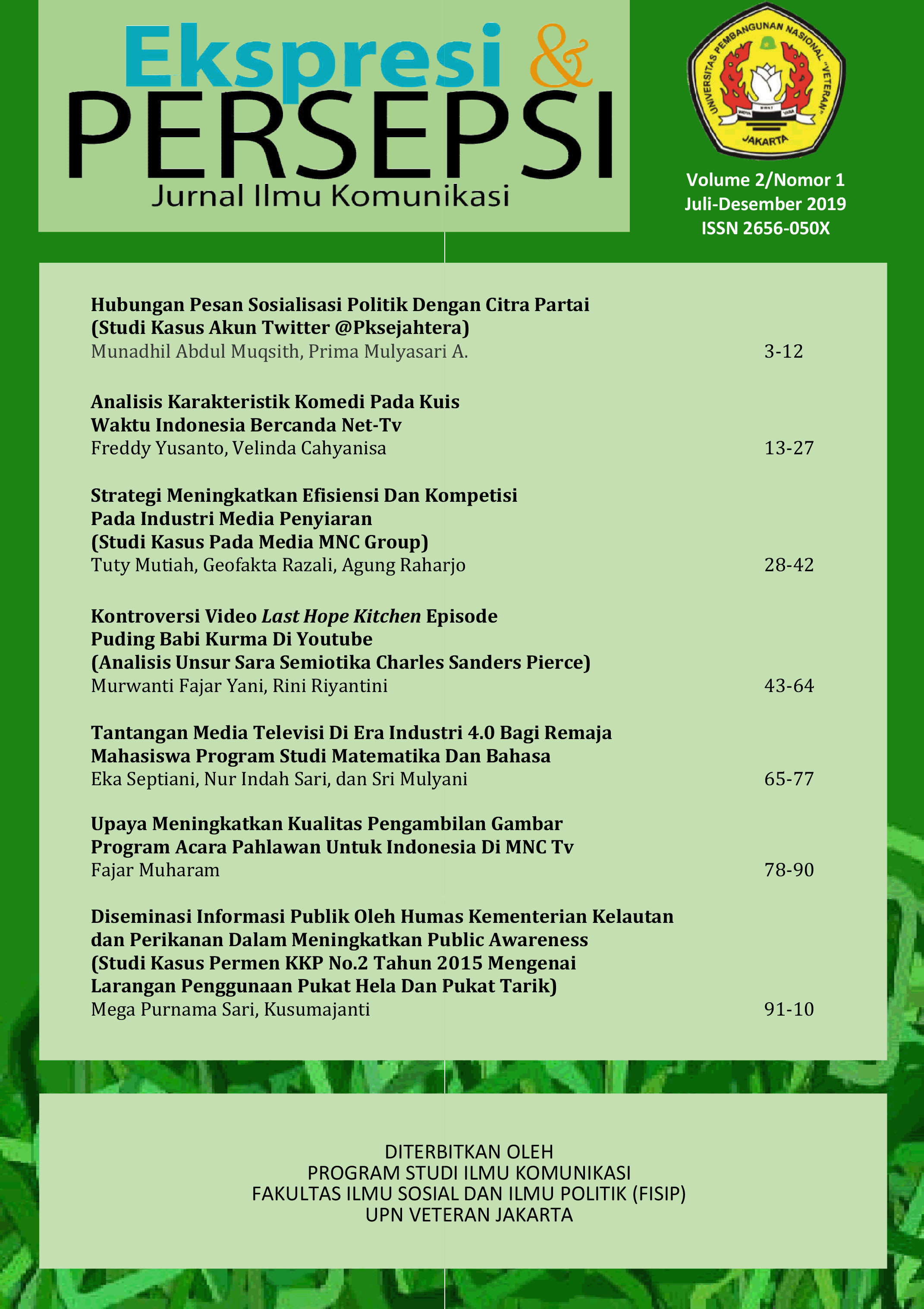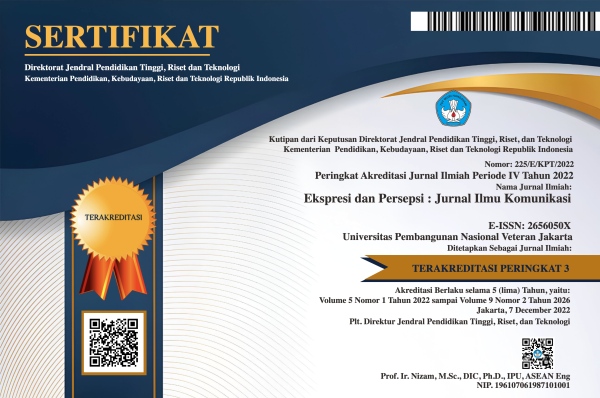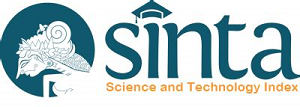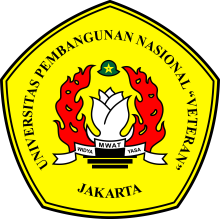The Relationship Of Political Socialization Messages Relations In Social Media Twitter With The Image Of PKS. (Study: Political Socialization PKS Through @PKSejahtera Account)
DOI:
https://doi.org/10.33822/jep.v2i1.972Abstract
The development of new media provides convenience in communicating and conveying the message, thus leading directly into a meeting without limited space, time and distance, users can easily participate in social interaction. Political parties take advantage of the development of new media in order to disseminate and political information to the public in order to obtain a good image. The Justice and Prosperous Party or sometime called PKS utilizing twitter as a social media in order to convey the message of political socialization through the official account DPP @PKSejahtera to 159.500 followers. This research is about the relationship of political socialization messages relations in social media twitter with the image of PKS. (Study: Political Socialization PKS through @PKSejahtera account). Purpose of this study is 1) how much the relationship of political socialization messages in social media Twitter with the image of PKS. This research method uses a quantitative approach. These results indicate that there is a relationship between socialization message via twitter to the image. The highest relationship found in the relationship of political socialization message with variable perception in the indicator 's political image.
Keywords : Political Socialization Messages, Prosperous Justice Party, Twitter, Image.
References
Terungkap, J. P. (2015, Maret 26). Retrieved from cnnindonesia.com: http://www.cnnindonesia.com/teknologi/20150326141025-185-42076/jumlah-pengguna-twitter-di-indonesia-akhirnya-terungkap/
Siregar, S. (2013). Metode Penelitian Kuantitatif: Dilengkapi Perbandingan Perhitungan Manual & SPSS. Jakarta: Kencana Prenada Media Group.
Arifin, A. (2011). Komunikasi Politik. Yogyakarta: Geraha Ilmu.
Nimmo, D. (1999). Komunikasi Politik, Komunikator, Pesan dan Media. Bandung: PT Remaja Rosa Karya.
Mirabito, B. .. (2004). The New Communication Technologies: Applications, Policy, and Impact. USA: Focal Press.
Pearsondkk, J. (2006). Human Communication. New York: McGraw Hill.
Setianto, W. A. (2013). Mdel Pengelolaan Komunikasi Politik di Media Online. Jogyakarta: Univesitas Gajah Mada.
Setianto, W. A. (2013). Mdel Pengelolaan Komunikasi Politik di Media Online. Jogyakarta: Univesitas Gajah Mada.
Setiawan, S. (2004). Membangun Citra Perusahaan . Jakarta: PT Damar Mulia Pustaka.
Siahaan, S. (1991). Komunikasi Pemahaman dan Penerapannya. Jakarta: Gunung Mulia.
Siregar, S. (2013). Metode Penelitian Kuantitatif: Dilengkapi Perbandingan Perhitungan Manual & SPSS. Jakarta: Kencana Prenada Media Group.
Solis, B. (2011). Engange: The Complete Guide for Brands and Business to Build, Cultivate, and Measure Success in the New Web. New York: John Wiley & Sons.
















